For over a century, cars and automobiles have been seen as a stereotypically male pastime. But historically, that’s simply not the case. Women have been involved in transportation innovation since the invention of the wheel. In fact, many of the gadgets and gizmos in your car and on the road were first invented by women.
Women in automotive history often had big ideas and bad luck with patents. No matter how much they might have been overlooked in their time, their innovations shape the way we drive to this day. From the fabulously famous to the frequently forgotten, join us in celebrating these female automotive pioneers.
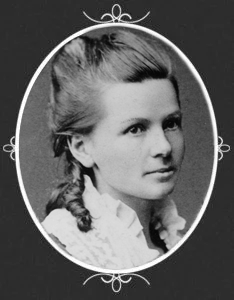
Bertha Benz (1849-1944)
Bertha Benz was the wife of engineer Karl Benz (of Mercedes-Benz fame) and she became his partner in business as well as in marriage. In 1886, Benz premiered the Benz-Patent Motorwagen, the world’s very first automobile. Two years later, Bertha Benz loaded her teenage sons into the Motorwagen and took a drive across their home country of Germany. This 66-mile drive was the first long-distance road trip ever.
Bertha’s aim had been to stir up publicity for the Motorwagen, and her plan worked. She was also able to troubleshoot some of the vehicle’s problems on her long ride. After the wooden brakes failed, she had them covered with the very first brake pads (which she called “break linings”) made of leather. Bertha Benz’s role as one of the most influential women in automotive history cannot be overstated.
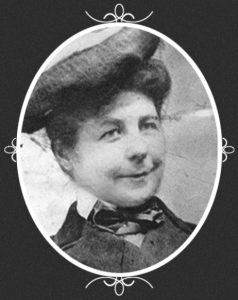
Mary Anderson (1866-1953)
On a trolley ride in New York City, Mary Anderson noticed that during snow or rain, the front windows had to be opened so that the motorman could see. In addition to freezing the entire cabin, this had the result of soaking the driver from head to foot. Upon her return to her home in Birmingham, Ala., Anderson designed the very first windshield wiper. Anderson’s manual windshield wiper was a rubber blade, operated by a crank. Although Anderson’s wiper was effective, the wiper only became an automobile standard after her patent expired.
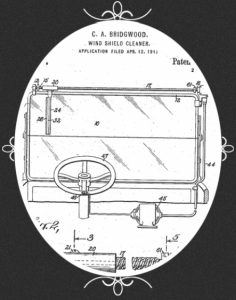
Charlotte Bridgwood (1861-1929)
Former vaudeville performer Charlotte Bridgwood (stage name “Lotta Lawrence”) was tired of manually wiping her windows when it rained. But as the president of a small manufacturing company, the Bridgwood Manufacturing Company of New York, she could do something about it.
Bridgwood engineered the first electronically-operated automatic windshield cleaners. The “Storm Windshield Cleaner,” as it was called, was patented in 1918. However, her patent expired years before automatic wipers became widespread.
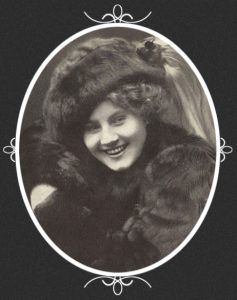
Florence Lawrence (1886-1938)
Charlotte Bridgwood’s daughter, Florence Lawrence, inherited her mother’s knack for acting as well as her automotive ingenuity. Florence Lawrence is often said to be the “first movie star,” but she is also a star among women in automotive history. This silent-film star was a pioneer in visual cues that we use to this day: turn signals. Lawrence was an avid motorist, describing her beloved car as “almost human.” It is said that she even did all of the vehicle’s mechanical upkeep herself.
Soon enough, Lawrence started customizing her ride. The most important customizations were her invention of turn and braking signals. Her turn signals were flags that would flare out of the car’s bumper at the push of a button. Her brake signal was an actual sign that said “STOP,” which popped up when the brake pedal was pressed. Lawrence never patented these ideas, but they went on to shape traffic safety forever.
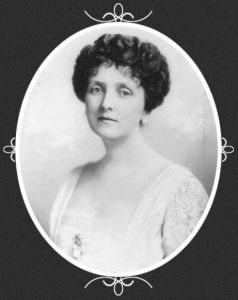
Emily Post (1872-1960)
Often remembered as the matriarch of manners, Emily Post was also an active motorist. In fact, she was one of the first female auto journalists. In 1916, Post published a book called “By Motor to the Golden Gate,” about her cross-country road trip from New York City to San Francisco. In her 1922 book, “Etiquette,” Post tells women that they do not need a chaperone in the car. According to her, it’s perfectly proper for a woman to drive herself, or even to drive a male passenger.
In 1949, Post published “Motor Manners: The Bluebooklet of Traffic Etiquette,” all about the rules of the road. Although she opens “Motor Manners” with the alarming warning “Bad motor manners can all-too-often result in MURDER,” Post was one of the first writers to popularize the idea of a woman behind the wheel.
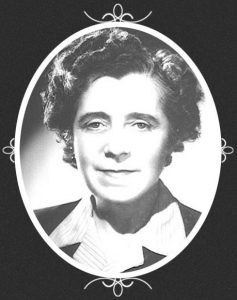
Dorothee Pullinger (1894-1986)
Dorothee Pullinger was the daughter of car designer Thomas Pullinger, and she dreamed of following in his footsteps. In 1914, she applied to join the Institution of Automobile Engineers, but was refused because she was a woman (she was finally accepted some years later as IAE’s first female member). Pullinger became the manager of Galloway Motors and championed the employment of local women, even going so far as to host an auto engineering college.
At Galloway, Pullinger oversaw the development of the sleek Galloway Car, billed as a car “by ladies, for those of their own sex.” Galloway Cars were proportioned for shorter drivers (and drivers in long skirts). Pullinger was also an enthusiastic race car driver, and she even won the Scottish Six Day Car Trials in 1924. She is a founding member of the Women’s Engineering Society.
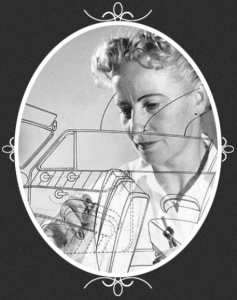
Helene Rother (1908-1999)
Helene Rother was born in Germany, and she later moved to Paris, France to be a designer. In Paris, she became a successful designer of decorative hat pins. After the Nazis occupied France in 1940, Rother fled with her daughter, Ina, and eventually wound up in America in 1941. After a stint illustrating comics at Funnies Inc., Rother joined the interior styling staff at General Motors. She was one of the first women to work as an automotive designer.
After four years at GM, Rother opened her own industrial design studio. She designed cars that were easy to get in and out of, seats that could lean back and upholstery that could be easily cleaned. She had an eye for color and brought a European flair to whatever she designed. Today, the cars that Rother worked on are classics, prized by vintage car collectors.

Hedy Lamarr (1914-2000)
Hedy Lamarr was another famous actress who had a hand in automotive history. Thought she found fame and fortune in film, Lamarr had a knack for invention and applied science. She drew up plans for an improved traffic stoplight, concocted a dissolving fizzy drink tablet and even gave Howard Hughes notes on the designs of his airplanes. But Hedy Lamarr’s most important scientific achievement was her use of frequency-hopping signals.
Lamarr conceived of frequency-hopping signals as a way to conceal the path of Allied torpedoes from the Germans in WWII. Though frequency-hopping signals would not be used by the Navy until 1962, Lamarr’s invention had a lasting impact. Her advances in communication technology led to today’s Wi-Fi, Bluetooth and, perhaps most important to modern vehicles, GPS. Without Hedy Lamarr, we would literally be lost.
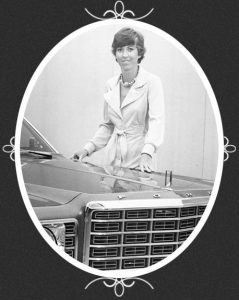
Mimi Vandermolen (1946)
Mimi Vandermolen joined Ford Motor Company’s Design Studio in 1970, but was laid off in 1974 during the oil crisis. That didn’t stop her. Vandermolen returned to Ford in 1977, and was promoted to Design Specialist in 1979. She led the interior design of the game-changing Ford Taurus, which included innovations such as ergonomic seats, rotary dials for climate control, a digital instrument panel and a complete suite of dashboard controls within the driver’s reach. The interior of your own car was most likely inspired by her Taurus design.
Vandermolen also supervised the design of the second generation 1993 Ford Probe. She favored streamlined design and focused on the experience of women drivers as a point of pride.
The Road Ahead
Women have always been making big changes behind the wheel, but they are still vastly underrepresented in the automotive industry. While 85% of car buying decisions are made by women and women buy 62% of new cars sold in the United States, only 27.1% of the automotive workforce is female. There are even less women in managerial roles. Still, women are taking strides toward workplace equality and toward automotive innovations. As more career options for women in the automotive industry become available, they’re taking more chances to push automotive technology into the future.
Which of these women in automotive history do you think had the biggest impact? Let us know in the comments below.
Love history? Check out our automotive history page.
30 Thoughts on “Women in Automotive History”
Leave A Comment
Comments are subject to moderation and may or may not be published at the editor’s discretion. Only comments that are relevant to the article and add value to the Your AAA community will be considered. Comments may be edited for clarity and length.




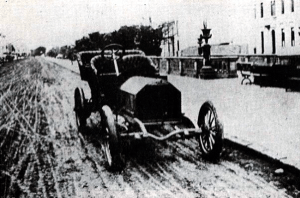





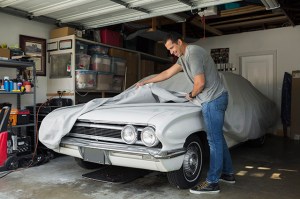





Bertha Benz, where it all began
Love the articles and information in this the month of Women Achievement’s.
Thank you very interesting to be passed along as well.
Bertha Benz, Seems to be the first among the list of nine, probably what started the lead in women & automotive design, still enjoying their innovative design to date!
Great article and comments! And let’s not forget some of the activists – in particular MADD (Mothers Against Drunk Driving) who helped utterly transform attitudes, behavior, and local, state (and Federal?) laws about what constitutes responsible driving.
Definitely Bertha Benz, if not for her “cross-country” trip the original vehicle would not exist. There was criticism and fear over adopting a new mode of travel. Similar to electric vehicle range anxiety, people could not get their heads around “fueling” a vehicle vs. watering a horse. Women were not allowed to travel alone, much less in a strange machine, so she dragged her sons along, found fuel at an apothecary and fixed a few things with a hat pin and garter. She is a true hero
Every one of these automotive pioneers contributed to the world in some way. Driving is now much safer and more comfortable due to inventions and innovations by them. I am glad that this article shines a light on their accomplishments.
An interesting and comprehensive article, but you did omit Joan Newton Cuneo, whose racing history is chronicled in the book “Mad for Speed” written by Dr. Elsa Nystrom; helping to research and write the book was a life-long dream for me as I was an avid car and racing enthusiast from a very early age and family members would often comment about “Cousin Joan’s” driving exploits.
A complete, accurate biography of Helene Rother, written from her resume, artwork, personal letters – and interviews, appears in Damsels in Design; Women Pioneers in the Auto Industry. This book won AACA McKean Award. Eighteen other pioneers are also profiled. Rother will be inducted into the Automotive Hall of Fame in July, 2021.
I am SHOCKED at the presentation of mis-information about women in automotive displayed on this site. Helene Rother, recently inducted into the Auotmotive Hall of Fame, was the first woman hired by Harley Earl at GM in 1942. She was not the first woman engineer or designer in the auto industry. She worked for the Funnies, and not directly for Marvel Comics.
Readers can read more about her at the Automotive Hall of Fame website; a reliable source.
Hi Constance! I updated the language of the Rother entry and also removed the Marvel reference. I never knew about Funnies Inc!
-Sarah
I was fascinated by the entire article and proud of what we women have and can do!
They all did much but Hedy Lamarr’s contribution went on to impact many other areas.
Loved the entire article.
No one has yet to come up with a place for a woman’s purse.
Haha! Yes, Beverly, that is so true!
Thanks for reading!
-Dana L.
Hedy Lamarr—she’s a bombshell of BRAINS and Beauty
Helene Rother
Charlotte Bridgwood
Mimi Vandermolen
Charlotte Bridgwood is my pick as her invention made driving in all types of weather much safer and comfortable.
Very interesting and informative. I choose the first windshield wiper.
This article barely touches the surface. The first and one of the greatest Female industrial engineers in the automobile industry was MaryEllen Dohrs who began working at General Motors in 1950.
Another woman auto pioneer: Joan Newton Cuneo, who raced in the early 1900s and also did the mechanical work on her cars.
I enjoyed reading about the pioneer women of the automotive industry, but Dorothee Pullinger’s story has a few typographical/grammar problems in the first paragraph. “Automotive” is misspelled (typographical error) and “excepted” should be “accepted.” I am also a HUGE Hedy Lamarr fan!
Good eye! I’ll have that fixed up in a jiff 🙂
Thanks, Sarah. Great article, glad you satisfied the proofreader!
love this article Hedy Lamarr
It honestly amazes me how brilliant she was and how unappreciated her brilliance was during her time.
– Sarah
The question asked is of these auto pioneers who do you think had the biggest impact?
My answer is Hedy Lamarr. She was brilliant!
Hedy Lamarr – for many important innovations in several fields.